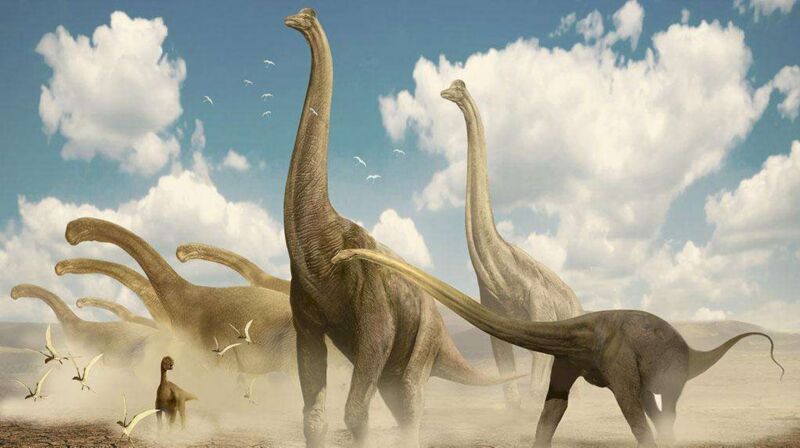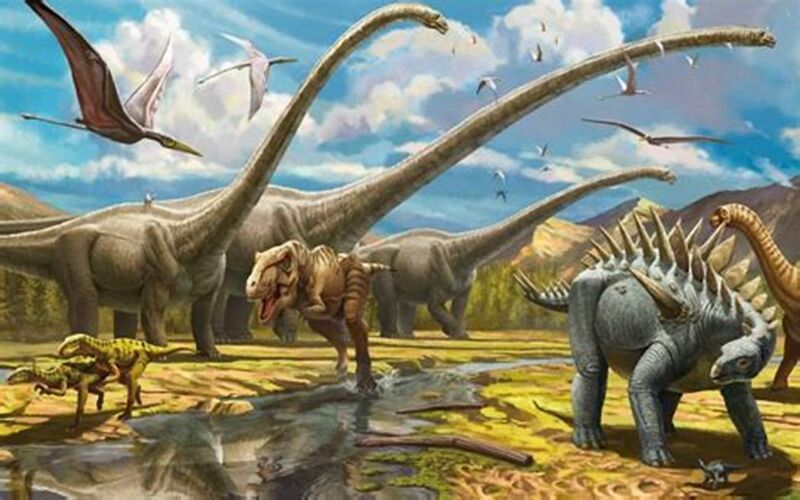long-necked dinosaur
The long-necked dinosaurs were a diverse group of herbivorous dinosaurs that roamed the earth during the Mesozoic Era. One of the most famous long-necked dinosaurs is the Mamenchisaurus.
Mamenchisaurus lived during the Late Jurassic period, around Late Jurassic Oxford to Early Cretaceous Apt, about 163 million to 113 million years ago. It was a massive dinosaur, 20-30 meters long, and may weigh more than 60 tons. Its most distinctive feature was its incredibly long neck, which could reach up to 35 feet in length. The neck was made up of 19 vertebrae, each of which was elongated and had a unique shape to support the weight of the neck.

Brachiosaurus lived in North America during the Late Jurassic about 154 million to 150 million years ago. Its body length is estimated to be between 18~21 meters (59~69 feet) and its weight is estimated to be between 28.3~58 metric tons (31.2~64 short tons).
Diplodocus lived in the Late Jurassic 145 million to 155 million years ago and was a giant plant-eating dinosaur. Diplodocus The body is also up to 27 meters long with incomplete extension had a very slender neck and tail, of which the neck was 8 meters long and the tail was 14 meters long. So although it is large, it does not weigh amazingly, usually about 10-20 tons
Brontosaurus lived between the Jurassic order and the Titong order, about 150 million years ago. They are one of the largest animals that exist on land, measuring about 20 meters long and weighing between 10 and 25 tons

The long-necked dinosaurs were some of the largest animals to ever walk the earth. Their long necks allowed them to reach high into trees to feed on leaves and other vegetation. They were also able to use their necks as weapons to defend themselves against predators.
In conclusion, the long-necked dinosaurs were a diverse group of herbivorous dinosaurs that lived during the Mesozoic Era. The Mamenchisaurus, Brachiosaurus, Diplodocus, and Brontosaurus were some of the most famous long-necked dinosaurs, each with their own unique features and adaptations. Their legacy lives on through the fossils and scientific research that continue to shed light on these incredible creatures.


